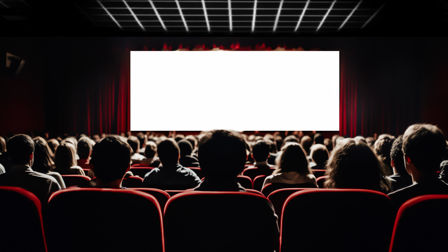Why Digital Craft Will Rule Supreme at Cannes
Atomic London's founding partner discusses how the new Digital Craft category could affect the future of adland.
As Cannes talk is beginning to gain traction yet again, excitement over this year's festival is inevitable, especially considering the changes announced at the start of 2016.
Various Lions awards have been reshuffled including the Digital Craft award. Now an independent category following its split from Cyber and Mobile Lions, the introduction of Digital Craft spells a new look for the festival. Atomic London's founding partner Richard Hill explains why he's excited about what the new category could mean for the future of the industry.
Cannes has created a stand-alone category to complement the existing Cyber awards: the Digital Craft Lions. The real value and significance of this move, however, lies not in the introduction of the new category itself (after all, no agency worth its salt sets out to make an idea that fits into such a prescriptive box), but in the fact that, as a result of the award, Cannes may no longer be the preserve of the ad industry alone – a sea-change from past decades.

Advertising at its best connects with a cultural truth or tension, and the entries to the new Digital Craft category will be no different – the best ideas will always win.
But the creative industry has always been infatuated with shiny new technology, to the extent that we see people desperately trying to reverse-engineer answers to their creative problems by using the tech itself as the starting point. “Oculus Rift is the answer,” they’ll say. “We’ve got to be using programmatic video – it’s key.”
Rather than reward such backwards behaviour the new categories need to set a benchmark, encouraging people to use that technology in unique and inspiring ways that amplify and augment already excellent ideas. We can expect to see a marked shift in the mediums via which great advertising concepts are realised, but the idea must come before the platform.

There have been a slew of recent campaigns that really exemplify the type of creativity I hope and believe will win the Digital Craft Lions this year – ads and experiences based on great ideas strengthened by simple, beautiful applications of technology.
Last year’s Honda Civic Type R campaign – The Other Side, created by Wieden + Kennedy – featured two films. One shows a normal dad doing the school run but the other shows him carrying out a bank heist, to demonstrate the more exciting ‘dark side’ of the Type R versus the standard model. Both ads could be viewed separately, but where technology came to the fore was by giving viewers the choice to flick between the two in parallel, simply by pressing the ‘R’ key on their keyboards.
A great use of a social application came from the Fisherman’s Friend Never Be Without A Friend campaign, in the shape of the world’s first interactive Twitter video (trailer below). This asked people to log in via Twitter, where profile details would be automatically scrapped to create a personalised version of the creative. We see a bloke on a fishing boat missing his friends back home, then looking at a mug with our face on it and scrolling through our Twitter feed on his smartphone with a wry smile.
The really exciting thing about the new Digital Craft category is the potential it has to bring new types of business to Cannes that may until now have been laughed off the Croisette. While Google, Facebook, Microsoft and even Snapchat are already having a growing presence at Cannes, arguably the likes of SAP and Oracle could soon have as much right to be at Cannes as the ad men.
I would expect this to encourage even more innovative work that sets new rules and standards. That’s progressive, and that’s what Cannes has always been about.
Connections
powered by
- Agency Atomic London
- Founder Richard Hill
Unlock this information and more with a Source membership.







 Membership
Membership


